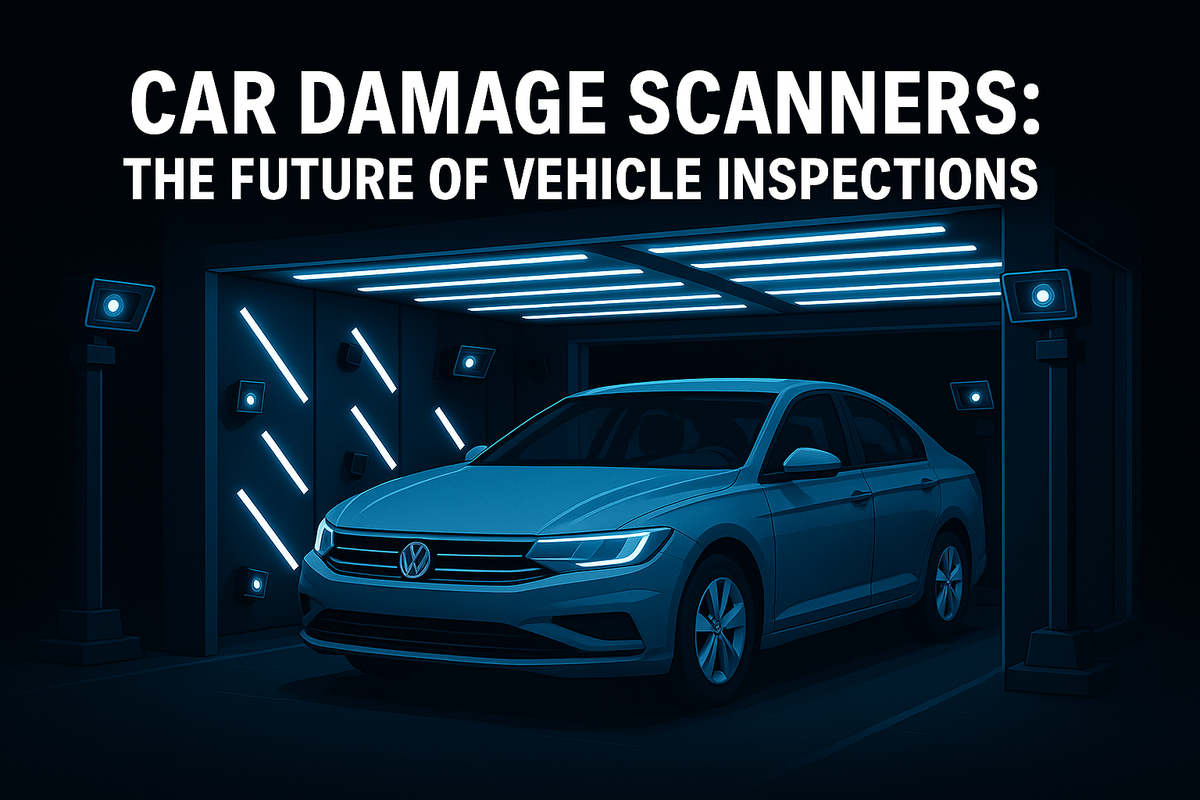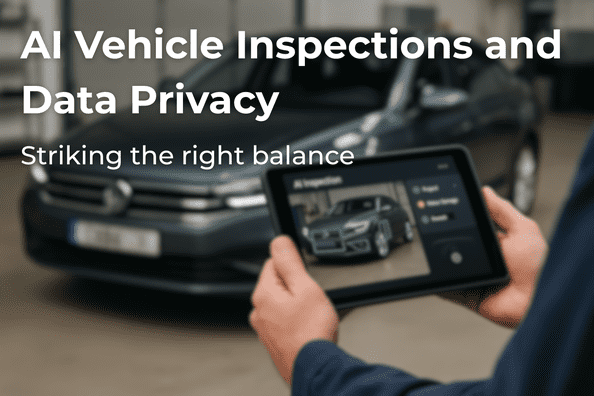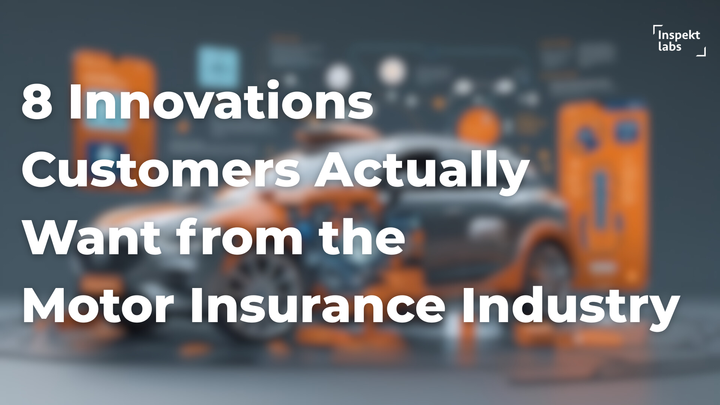Car Damage Scanners: The Future of fast, accurate, and scalable vehicle scanning
Vehicle Damage Scanners - An innovative approach using advanced imaging and AI processing to automate the entire vehicle inspection process, ideal for companies running large fleets, car rentals, or a car dealership.

In today's fast-paced automotive world, the need for fast, consistent, and accurate vehicle inspections is higher than ever.
The first step towards achieving this was to move away from manual inspections to AI-powered self-inspections using smartphones. While smartphone inspections have scaled significantly over the last few years, they aren't the ideal solution when it comes to inspecting vehicles on a large scale.
Enter Vehicle Damage Scanners - An innovative approach using advanced imaging and AI processing to automate the entire vehicle inspection process, ideal for companies running large fleets, car rentals, or a car dealership.
How are Vehicle Damage Scanners better when compared to manual or smartphone-based inspections? Let's dive deeper in this blog.
What are Vehicle Damage Scanners?
Vehicle Damage Scanners (Or fixed camera setup) for vehicle inspections are a stationery vehicle scanner system of strategically positioned cameras and lighting, built to automatically scan and analyse the exterior (and sometimes interior) of a vehicle, detecting vehicle damage in the process, and moves through a designated inspection zone.
There are four types of vehicle damage scanner systems that can be used for damage detection - box systems, pillar systems, arch systems, and a wall-mounted system.
#1 - Box Systems
Enclosed structures offer controlled conditions and optimal lighting, perfect for precision scanning using an AI-powered car inspection scanner system.
#2 - Pillar Systems

2 vertical columns installed on either side of a vehicle's path, with 2-4 cameras placed on each pillar. This system is great for narrow spaces and versatile enough for all vehicle types.
#3 - Arch Systems
Created using an arch-type structure, Arch systems cover the entire vehicle using a 360° vehicle inspection approach. They are ideal for full-body imaging in large setups.
#4 - Wall-mounted systems
Mounted on existing infrastructure, these offer flexibility without compromising coverage.
Businesses can choose from various system types based on their layout and operational needs.
Camera Placement and Coverage
Irrespective of the type of camera setup a business opts for, the camera positioning and lighting fixtures will play a very important role in ensuring that the right details are captured during the 360° vehicle inspection process.
Camera Placement
Effective inspections starts with smart camera positioning. A well-designed car scanner system ensures -
- Multi-angle imaging to capture front, rear, side, and roof.
- Custom camera setups (2-4 per pillar) based on inspection needs
Strategic placement eliminates blind spots and improves the accuracy of your car damage scanner.
This layout can be customized based on the business' requirements. For instance, if a customer requires tyres to be captured in all inspections, cameras can be placed 20cm from the ground to capture clear shots of the tyres.
Lighting and additional fixtures
To improve the coverage of the car scanner system during a vehicle inspection, customers may also opt for
- Zebra lighting to better reveal surface-level dents, especially those caused by hail.

- Underbody scanners to identify leaks, corrosion, or damage under the vehicle.
These additions enhance the quality of inspections delivered by an AI-powered car inspection scanner.
Throughput and efficiency
One of the biggest benefits of using vehicle inspection technology like fixed cameras is the time saved.
- Vehicles can be scanned in as little as five seconds, as they drive through a setup at a speed of 2-5 kmph without stopping.
- These fixed camera systems can handle up to 300 inspections per hour.
- The drive-through model eliminates the need of stopping for a vehicle inspection.
- Real-time data sync allows instant uploading to backed systems for processing.
Such efficiency is especially valuable for rental agencies, fleet operations, and auction houses with high vehicle inspection volumes.
Built for harsh environments
While building a car damage scanner setup for clients, it is crucial to consider the local weather conditions. This is an important step, needed to ensure the longevity of each setup.
- Weatherproof and corrosion-resistent material is used for locations with heavy rainfall.
- Wind-resistent designs with secure bolting and structural integrity are ideal for locations with high wind speeds using an outdoor system.
- UV-resistent casing and heat dissipation measures are used to ensure cameras remain functional during intense heat.
- Dust-tight systems with waterproof casing is used to increase the durability of this setup.
The entire fixed camera inspection system setup is designed to reduce maintenance time and costs, and is built to ensure long-term performance and reliability.
Infrastructure and installation requirements
Irrespective of the type of fixed camera inspection systems businesses opt for, there are some infrastructure and installation guidelines they must follow -
- Space assessment - Ensure that there is enough space (6 feet wide & 15 feet long) to accommodate the setup. Along with this, there should also be enough space for vehicles to drive in and out of the setup.
- Power and network connectivity - A standard electrical socket close to the setup along with 100MBPS wired internet connection is the bare minimum required to run a fixed camera inspection system.
- Safety and compliance - It is also important to ensure that all fire norms and other regulations are taken into account during the setup process to ensure smooth functioning.
Smartphone-based (Decentralized) vs. Fixed camera (centralized) setup for vehicle inspections
Applications across industries
Fixed camera inspection systems are transforming how businesses handle vehicle condition reporting -
- Fleet Management: Fixed camera systems can help fleet companies monitor vehicle health regularly. This will help the fleet manager keep track of the vehicle damage and schedule maintenance and service based on the damage severity.
- Car rental business: Fixed camera inspections will help car rentals eliminate disputes, automate check-in/check-out, and maintain accountability during the rental process.
- Dealerships: These systems will help car dealerships better evaluate the vehicle condition during trade-ins and pre-sale inspections.
- Repair networks: Repair networks can use the system to track before-and-after conditions of the vehicle to ensure quality assurance.
Each of these sectors benefit from reducing inspection time, higher accuracy, and cost control through automated 360-degree vehicle inspections.
Looking ahead
The future of fixed camera inspections is full of potential.
- Smarter AI - Enhancements in the algorithm will lead to improved damage classification, severity scoring, and cost estimation
- IoT integration - This will help enable real-time alerts, cloud syncing, and predictive insights.
- Customization & scalability - Fixed camera inspection systems can be tailored to specific business needs and can easily be scaled without having to re-invest from scratch.
These trends will make AI-powered car inspection scanners even more indispensable for modern automotive businesses.
Conclusion
The days of slow, subjective, and error-prone vehicle inspections are numbered. With fixed camera inspections, businesses gain -
- Faster inspection cycles
- Consistent and objective reporting
- High-resolution imaging with full-body coverage
- Scalability for growth
It’s time to upgrade your vehicle inspection process with a dependable, future-ready vehicle scanning technology solution.
Explore how fixed camera systems can transform your business today.



